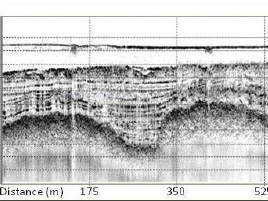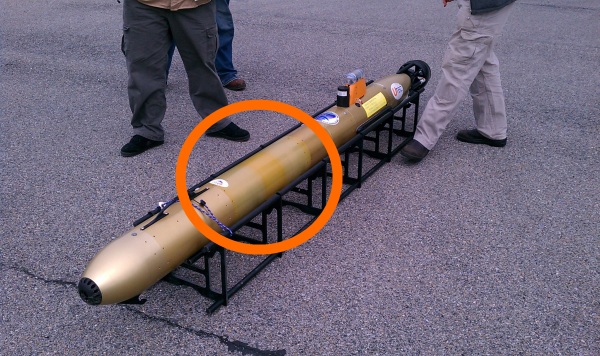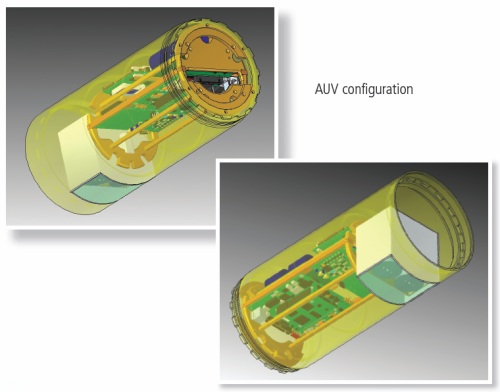I was minding my own business, walking between Smith Lab and Cannon Lab buildings when what to my wandering eyes should appear but a reeeallly long stretched out Gavia Scientific AUV. My geek radar started going off and I just HAD to investigate exactly what was inside these newly milled sections of hull.
I invited myself into the lab and started asking some questions. It turns out that these new sections contain a prototype Teledyne Benthos Chirp III sub-bottom profiler that was specially designed to integrate with an AUV. Dr. Art Trembanis’ CShel lab and Val Schmidt from the University of New Hampshire’s Center for Coastal and Ocean Mapping were working with UTEC Survey Inc. to successfully integrate and test this new addition to the AUV’s sensor lineup. I cornered Nick Jarvies from UTEC and he gave me the run-down on the new addition (thanks Nick!):
httpv://www.youtube.com/watch?v=fQkWAhaFcsk
 What is a “sub-bottom profiler” you ask? Per the Wikipedia entry, it is a “powerful low frequency echo-sounder…developed for providing profiles of the upper layers” of the ocean floor. In the case of the Chirp III, probably in the range of 10-20kHz. Per Dr. Trembanis “Data is stored in an onboard Compact Flash card in an industry standard SEG-Y format. The advantage of a chirp signal over a single frequency output is that through chirp demodulation of the returning signal one can get a better compromise between penetration and resolution. The lower the frequency the greater the penetration but the less the resolution (and vice versa for high frequency) so a chirp signal which modulates from a low to high frequency provides penetration and resolution. All of this depends to a great degree on the kind of bottom material one is trying to penetrate.”
What is a “sub-bottom profiler” you ask? Per the Wikipedia entry, it is a “powerful low frequency echo-sounder…developed for providing profiles of the upper layers” of the ocean floor. In the case of the Chirp III, probably in the range of 10-20kHz. Per Dr. Trembanis “Data is stored in an onboard Compact Flash card in an industry standard SEG-Y format. The advantage of a chirp signal over a single frequency output is that through chirp demodulation of the returning signal one can get a better compromise between penetration and resolution. The lower the frequency the greater the penetration but the less the resolution (and vice versa for high frequency) so a chirp signal which modulates from a low to high frequency provides penetration and resolution. All of this depends to a great degree on the kind of bottom material one is trying to penetrate.”
The advantages of an AUV-based sub-bottom profiler (also per Art Trembanis) are:
- We remove lots of water column data that would normally be unwanted and has to be removed/ignored from the record.
- Because we can precisely follow the terrain near the bed or hold a constant depth well below the surface we can remove/diminish effects of waves that cause a ship to bob up and down.
- We are able to do higher resolution characterization of the subsurface in greater water depths since otherwise from a surface ship you would have to use a lower frequency system to penetrate through the water column.
- Because of the precise navigation of the AUV we can get very tight line spacing and precision following of features (i.e. pipeline routes) which allows us to provide better data more efficiently.
Thanks to everybody for taking time to talk on camera and for answering my questions!


